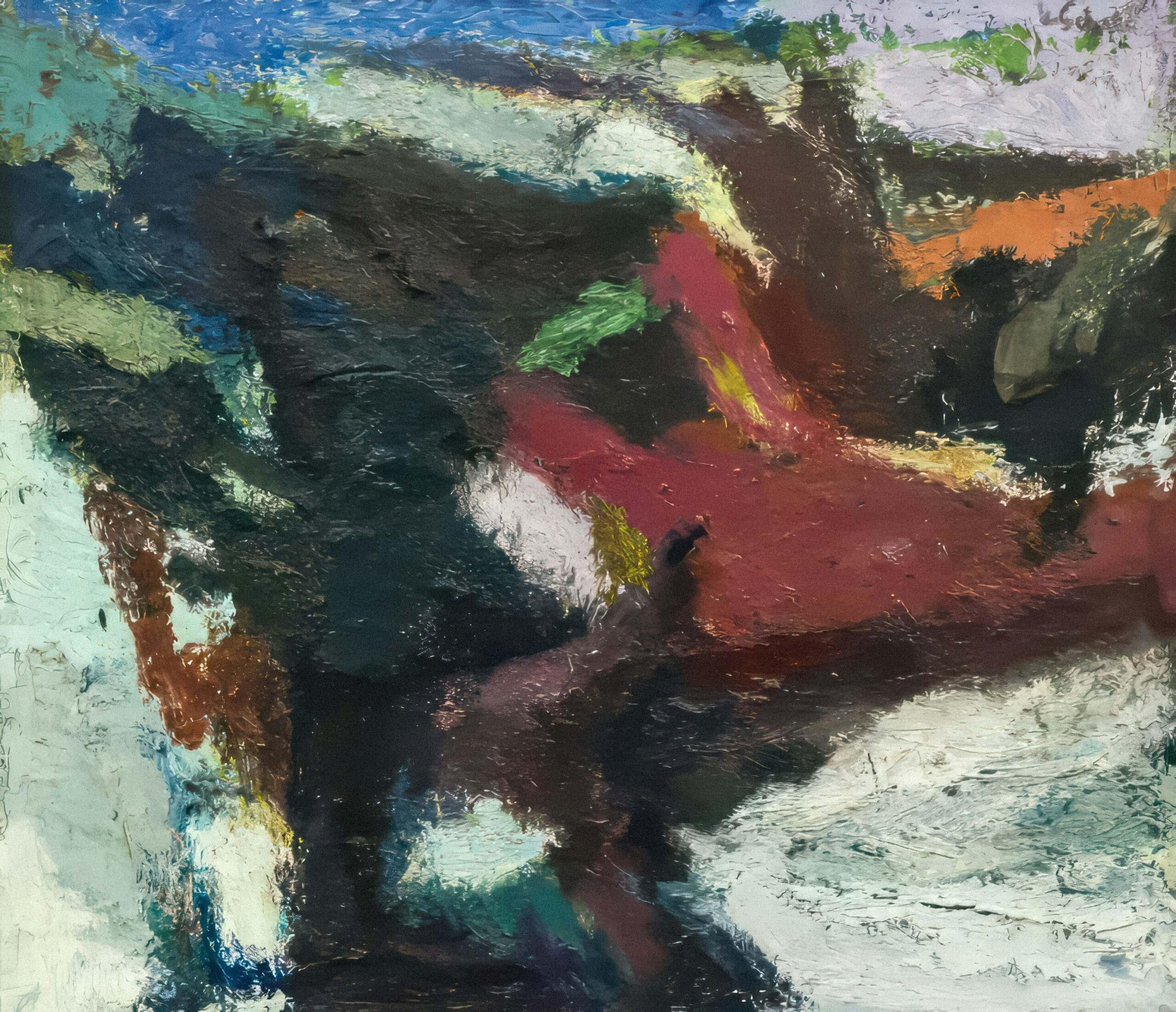CAF’s Executive Director Martin Rowe remembers Steven Wise, the founder of the Nonhuman Rights Project (NhRP), who died on February 15, 2024. (You can read remembrances of Steven here.) Photo: Martin Rowe, Steven Wise, and Patricia Denys at a talk in Venice, California on June 30, 2018. (Mary Holmes/SynergyDogs Media)
It was an unfortunate serendipity that I received news about the passing of Steven Wise as I was reading “Legal Personality for Animals in India and Pakistan,” by Tariq Ahmad, posted by Taylor Gulatsi on the Library of Congress’s blog page. The blog cited at length the judgment of Athar Minallah, Chief Justice of the Islamabad High Court in Pakistan, on the imprisonment of Kavaan, dubbed “the world’s loneliest elephant,” who’d spent years chained up and alone in “a small, barren enclosure at the Marghazar Zoo.” Perhaps it was because I was thinking of Steven, or because his ideas animated so much of my own thinking about animals, that the blog’s quotations from Justice Minallah’s 67-page judgment felt so resonant:
“Do the animals have legal rights?” Chief Justice Minallah asked rhetorically. “The answer to this question, without any hesitation, is in the affirmative.” He went on:
An animal undoubtedly is a sentient being. It has emotions and can feel pain or joy. By nature, each species has its own natural habitat. They require distinct facilities and environments for their behavioral, social, and physiological needs. This is how they have been created. It is unnatural for a lion to be kept in captivity in a restricted area. To separate an elephant from the herd and keep it in isolation is not what has been contemplated by nature. Like humans, animals also have natural rights which ought to be recognized. It is a right of each animal, a living being, to live in an environment that meets the latter’s behavioral, social, and physiological needs.
Steven spent many decades trying to persuade jurists and U.S. courts that animals—particularly cetaceans, great apes, and elephants—should be afforded legal standing. In his books (including his most recent, Thing: Inside the Struggle for Animal Personhood) and in the cases he brought to court, he and his team at NhRP presented reams of evidence and many experts to demonstrate what Justice Minallah (and most other human beings) have no doubt about: that animals display emotions, feel pain or joy, and possess “natural rights which ought to be recognized.” His cases focused on social creatures whose isolation in “unnatural” settings—whether in zoos, aquaria, or cages—over many years could speak to the heart (as well as the head) of the human social creatures who sat in judgment over them.
Kavaan was released in November 2020, when local and international activists, including the performer Cher, enabled him to be removed to the Elephant Nature Park in Siem Reap, Cambodia. Happy the elephant, one of Steven’s last cases, was less fortunate: she still lives alone at the Bronx Zoo. Her case and others NhRP has prosecuted have resulted in several valuable dissents, but in every case so far the majority of judges have either found themselves hamstrung by legal precedent, bound to the inherent anthropocentrism of U.S. law, or committed to the animals’ current status as property under the law.
Steven protested that the arguments NhRP made on behalf of animals were in the service of those particular animals. Yet, I suspect that underlying the resistance by the courts lay the concern that if they determined that one elephant was being held against her will, then that judgment might apply to other elephants in zoos and circuses. And if the judgment was based on recognizable expressions of preferences or zoochoses in an elephant, then might that not apply to other large animals in zoos or aquaria, or to pigs in sow stalls or calves in veal crates, or chickens in battery cages? Surely such thinking was the reason why the Alliance of Marine Mammals and Aquariums and Protect the Harvest (“a non-profit organization . . . created to defend and preserve American freedoms and to support farmers, ranchers, outdoor enthusiasts, and animal owners”) submitted an amici curiae on behalf of the Wildlife Conservation Society. It certainly seemed self-evident to them that once you granted that an animal was not a thing but a nonhuman person, with intrinsic rights that could not be abrogated, the entire animal-industrial complex would be under threat.
I was reading the LOC blog for a forthcoming paper from Brighter Green comparing and contrasting the movement for the rights of Nature with that for animal rights. Justice Minallah’s opinion is one of dozens of similar judgments from jurisdictions around the world. Many draw from rights of Nature language enshrined in some countries’ constitutions (particularly in Latin America), where Western legal structures have been influenced by Indigenous cosmologies that view humans and wild animals through less hierarchical and anthropocentric lenses. The paper suggests that it may ultimately not be nonhuman legal personhood that marks animals’ best immediate hope for their interests to be honored in a court of law; instead, it may be through rights of Nature provisions that extend rights-bearing entities beyond the human or animal to ecosystems themselves.
There are, as any animal rights advocate would tell you, many problems with such an approach. Some wild animals may be protected; but what about farmed animals, or so-called invasive species, or wild animals whom Indigenous peoples traditionally hunt or eat? If they are considered “unnatural,” or are de-natured in order to become edible, or are consumable if they are sacramentalized, then under what statutes will their rights be considered? That said, the many examples where individual animals gain legal rights through rights of Nature provisions (such as the famous case of Estrellita, the woolly monkey from Ecuador) offer a reason to be cautiously optimistic. As Peruvian legal scholar Marcia Condoy Truyenque observes in a June 2023 law review article on Estrellita: “To recognize animals as legal subjects and rights-holders is powerful as a political declaration that can lead to the recognition of animal rights by their own value, independently from the Rights of Nature framework.” I think Steven would have welcomed that.
I only met Steven on a few occasions, and each time I found him personable and engaging. Like many radical thinkers—including Tom Regan, the co-founder of this organization—his ideas remain a challenge to the legal profession, the animal-industrial complex, and to long-held cultural and institutional beliefs in human supremacism. Like Tom, Steven did not live to see his hoped-for outcome. Yet, due at least in part to his dogged commitment, animal law is burgeoning, attracting young talent from around the world. And also due in part to Steven, so is animal rights law. Because of him, and countless others who are continuing the vital work of representing animals’ interests, in spite of the many barriers outlined above, it’s surely only a matter of time before animals have their day in court—even in the United States—and widen the cracks in the edifice of animal exploitation.




